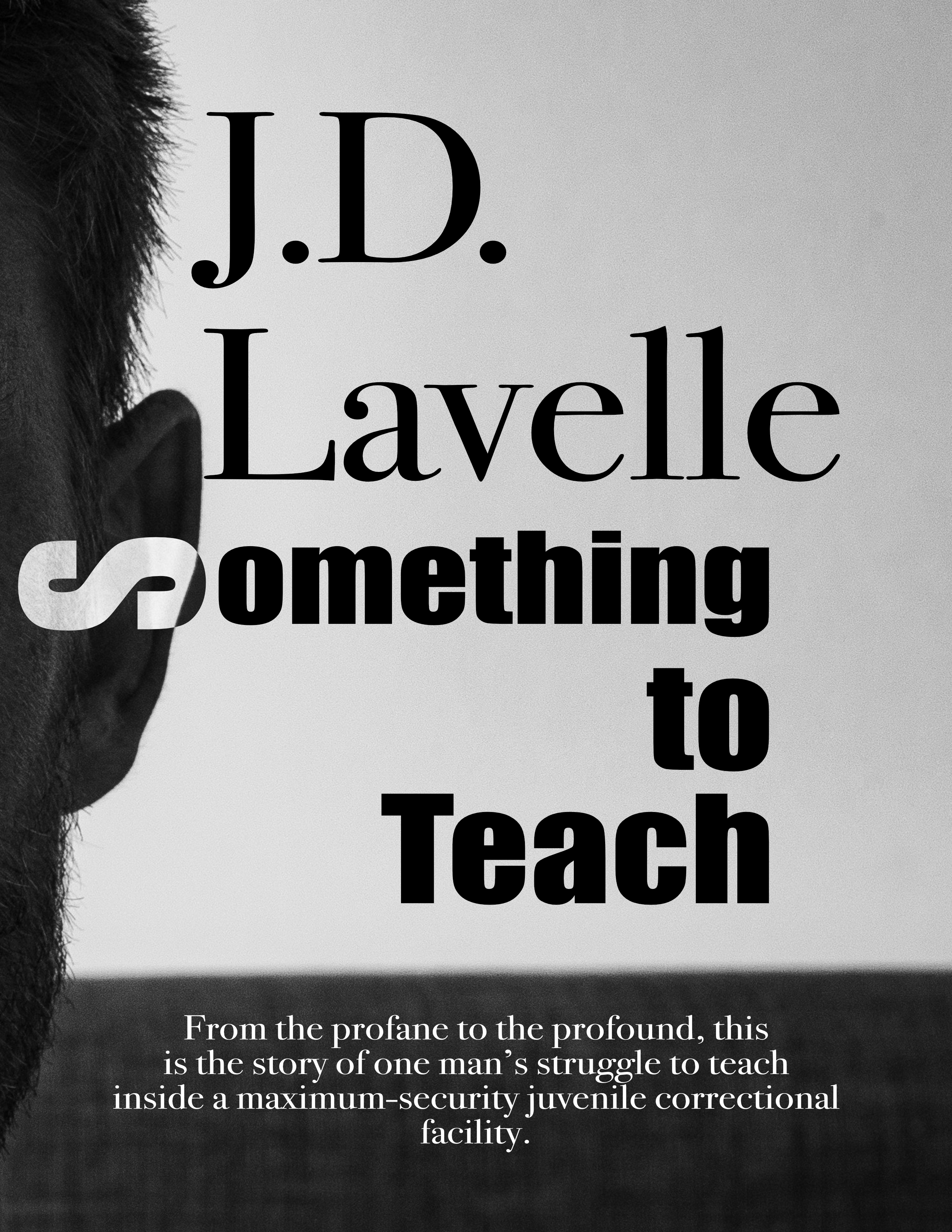

Something to Teach is my semi-autobiographical novel about my first steps – and missteps – teaching on the inside of a maximum-security juvenile correctional facility.
“One test of the correctness of educational procedure is the happiness of the child.”
Maria Montessori
Imagine being able to observe classrooms of today, yet remain unseen. Like some Ebenezer Scrooge being escorted through time by the Ghosts of Christmas, invisible to the students and teachers yet able to see and hear the workings of the classroom. What do you think you would see?
Happy children?
Maybe.
The sad reality is that we start losing students in middle school – especially young men. During this time, students are just starting to explore and understand their independence, and it is precisely at this time when we start to impose more structure and allow fewer freedoms in terms of their education. What is the end result?
Most students will do just fine.
Most students understand the expectations placed upon them by their parents, friends, community, etc., and they will conform, grudgingly, to those expectations.
But what about those students that don’t do well? Those that push back against the structures placed upon them in classrooms and schools? Those 8th grade boys that refuse to read The Diary of Anne Frank because it bores them to tears?
You cannot force some students to engage in school – no matter what. So what are you going to do? How are you going to hook and reel them in?
Imagine telling a group of students, “Today we are going to read a text with minute attention to detail in order to determine what the text is explicitly saying. In addition, we will make logical inferences from the given text. You will also be citing specific textual evidence in order to support any written or spoken conclusions you may draw from the text.”
How would most react? Eye rolling? Looks of dread? Furtive glances at watches, clocks, and phones in order to see how long their suffering will last? All of the above and more. And yet, this is what happens in classrooms every single day.
Young people care about people and ideas.
Ideas are the most important things we can teach to those our care. Ideas such as love, freedom, honor, justice, knowledge, hope, curiosity, and faith are just a few of the ideas that students should explore. These are not new ideas. They are very old, and they are worth teaching and learning.
And how should we allow students to explore these ideas? Through stories, of course. Tales can transport readers to different worlds. In these new worlds, the possibilities for learning about ideas and ideals are endless.
Instead of driving a stake through the heart of a young person’s will to read, write, and think, students should be given more opportunities to explore the world of ideas through a variety of reading choices.
Something to Teach is dedicated to providing Ideas Worth Teaching – and stories worth reading.
So where did it all start? In the classroom. With me. A frustrated teacher faced with frustrated students.
I was frustrated because I could not find suitable reading materials for my students. My students were frustrated because their teacher (me) was asking them to read materials that may have been approved by publishers, curriculum specialists, department chairs, and even other teachers, but in reality these materials were simply not engaging. So what was I going to do about it?
Start writing.
And thus, Something to Teach was born.
Coming in 2025…Inside Outs!
More details to follow.
